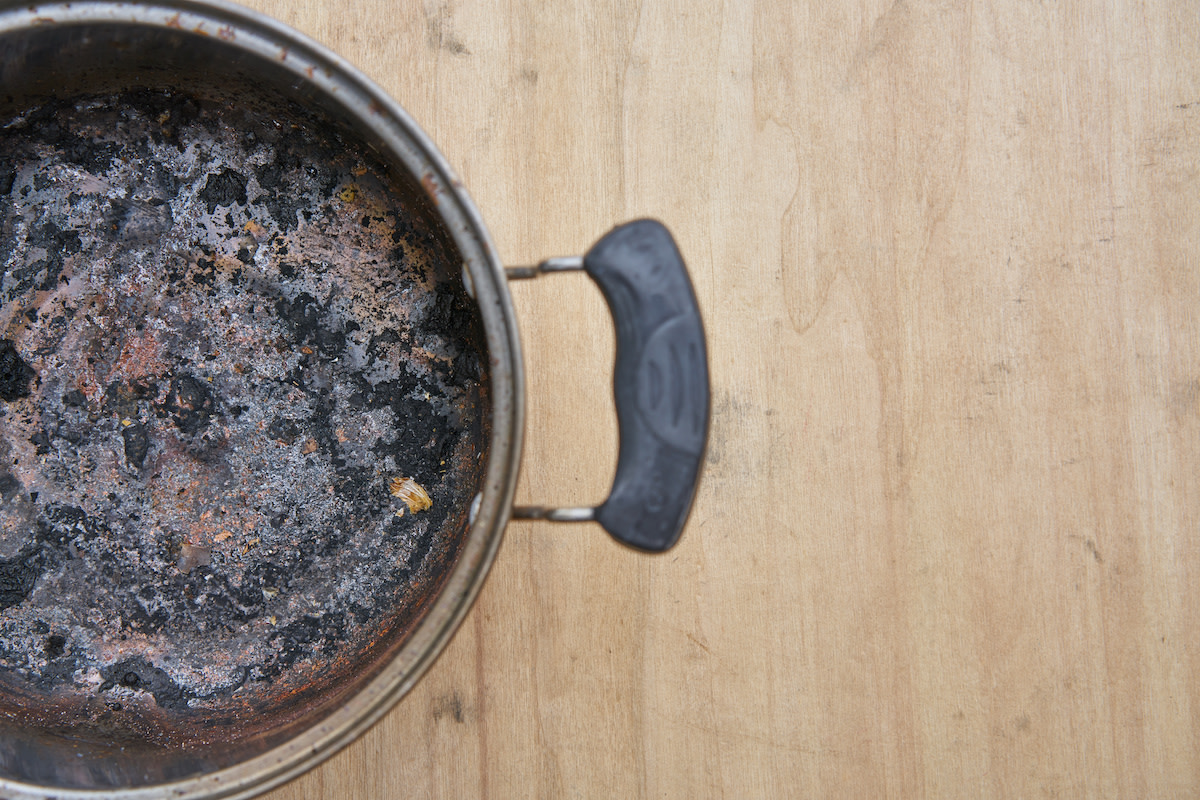How to Clean a Burnt Pot: 4 Easy Methods for Pots and Pans
Written by MasterClass
Last updated: Sep 2, 2021 • 3 min read
You can sometimes still salvage partially burned food, but a burnt pot can present a whole other challenge. Read on to learn how to clean a burnt pot.
Learn From the Best
3 Factors That Can Contribute to a Burnt Pot
You can prevent scorched pans and cookware by knowing your cooking elements. Here are three factors that can contribute to a burnt pot or burnt pan:
- 1. Cookware materials: The material of your cookware will have a direct effect on the speed at which a pot warms up and distributes heat across the cooking surface. For instance, a cast-iron skillet has a thick construction and lower thermal conduction compared to aluminum cookware. Although this may result in cast-iron products taking longer to reach optimal temperature, the heat will distribute more evenly—potentially making it less likely to burn food on its surface.
- 2. Quality of construction: Poorly constructed cookware can fall short in certain areas, especially in attaining an even thermal spread. This can result in hot spots, where food particles can stick to the bottom of the pan and scorch. It might be worth it to you to invest in cookware that is safe and reliable if you want to avoid scorched pots.
- 3. Temperature control: How precisely you can control the temperature of your heat source—whether you are using a gas stove, electric stove, or another heat source—will affect how likely your food or pot is to burn.
4 Tips to Prevent Pots From Burning
You can prevent pots from burning and accumulating grime by taking extra precautions before, during, and after you cook. Here are a few tips that can help:
- 1. Clean your stovetop. Make sure your stove is clean and free of residue before cooking. The goal is to create an even thermal transfer from the heat source to the cookware.
- 2. Preheat oil in the pot. Whether it's your favorite olive oil or a cooking spray, the heated oil will act as a lubricant to keep foods from sticking and burning.
- 3. Use the proper burner. Avoid using a burner with a smaller circumference than your pan or pot. Uneven heat can result in unbalanced cooking and a possible burnt area on your pan.
- 4. Stir regularly. Stir the contents of your pots and pans at regular intervals with a wooden spoon or spatula to allow the ingredients to cook equally in the hot pot. Keep in mind that even nonstick pans need supervision from time to time.
4 Easy Methods for Cleaning a Burnt Pot
There are many cleaning hacks to bust up the common dishwashing problem that a steel pot’s stubborn layer of gunk presents. Rather than throwing your scorched pot in the dishwasher and hoping for the best, consider these effective cleaning techniques that utilize common items from your pantry:
- 1. Baking soda and white vinegar: Add equal parts water and white vinegar to your pot and bring it to a boil. After a few minutes, turn off your burner and add a few tablespoons of baking soda. Next, you will discard most of the mixture, allowing enough water to mix with additional baking soda to form a paste. Use a scrubber to coat this paste around the dish to knock off any remaining food bits.
- 2. Boiled water with lemon: One of the more hands-off approaches to breaking up burnt food on your cookware is boiling lemons. Simply fill the pot with a few inches of water and toss in some lemon slices. Bring the water to a boil for five to ten minutes, and then the acid from the lemon juice will work with the hot water to break up food bits.
- 3. Dishwasher tablet: You can use a sponge and dish soap for everyday messes, or you can fill the pan with warm water and use a dishwasher tablet. You get the fizzing clean of the dish soap and the scrubbing power of the sponge all in one.
- 4. Stainless steel wool or aluminum foil: For heavy-duty cleaning, a little elbow grease might be necessary, and steel wool can be your secret weapon when other cleaning methods fail. Fill your pot with soapy water and scrub it with the steel wool, or you can use aluminum foil as an easy substitute for a scouring pad.
Want to Learn More About Cooking?
Become a better chef with the MasterClass Annual Membership. Gain access to exclusive video lessons taught by the world’s best, including Alice Waters, Gabriela Cámara, Niki Nakayama, Chef Thomas Keller, Gordon Ramsay, Yotam Ottolenghi, Dominique Ansel, and more.
